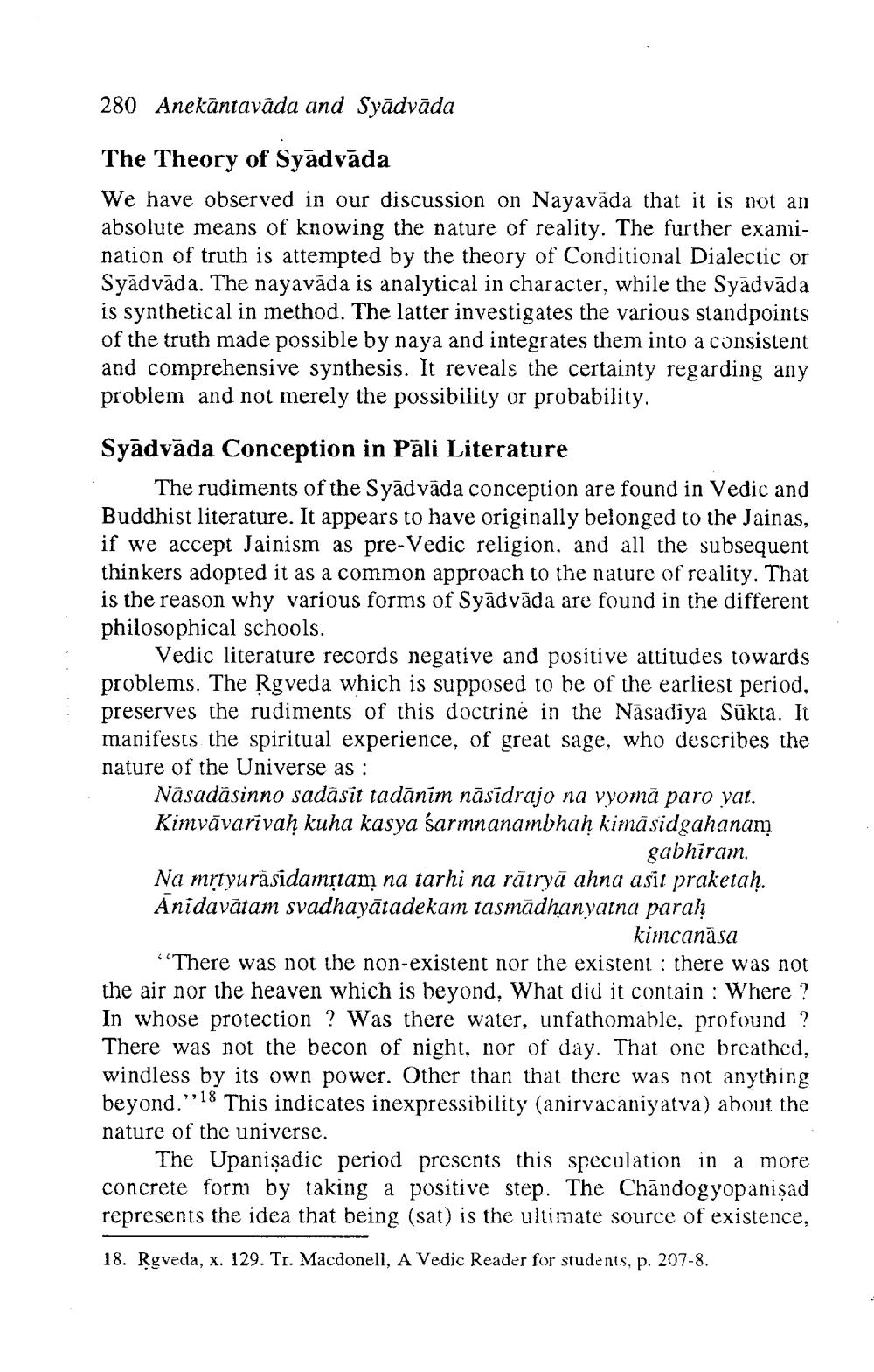________________
280 Anekāntavāda and Syādvāda
The Theory of Syadvāda We have observed in our discussion on Nayavāda that it is not an absolute means of knowing the nature of reality. The further examination of truth is attempted by the theory of Conditional Dialectic or Syādvāda. The nayavāda is analytical in character, while the Syādvāda is synthetical in method. The latter investigates the various standpoints of the truth made possible by naya and integrates them into a consistent and comprehensive synthesis. It reveals the certainty regarding any problem and not merely the possibility or probability.
Syādvāda Conception in Pāli Literature
The rudiments of the Syādvāda conception are found in Vedic and Buddhist literature. It appears to have originally belonged to the Jainas, if we accept Jainism as pre-Vedic religion, and all the subsequent thinkers adopted it as a common approach to the nature of reality. That is the reason why various forms of Syādvāda are found in the different philosophical schools.
Vedic literature records negative and positive attitudes towards problems. The Rgveda which is supposed to be of the earliest period. preserves the rudiments of this doctrine in the Năsadiya Sukta. It manifests the spiritual experience, of great sage, who describes the nature of the Universe as :
Näsadāsinno sadāsit tadānīm nāsidrajo na vyomā paro yat. Kimvāvarivah kuha kasya sarmnanambhaḥ kimäsidgahanam
gabhiram. Na mrtyurāsidamstam na tarhi na rātryā ahna asīt praketaḥ. Anidavātam svadhayātadekam tasmādhanyatna parah
kimcanāsa “There was not the non-existent nor the existent : there was not the air nor the heaven which is beyond, What did it contain: Where? In whose protection ? Was there water, unfathomable, profound ? There was not the becon of night, nor of day. That one breathed, windless by its own power. Other than that there was not anything beyond.”:18 This indicates inexpressibility (anirvacaniyatva) about the nature of the universe.
The Upanișadic period presents this speculation in a more concrete form by taking a positive step. The Chāndogyopanișad represents the idea that being (sat) is the ultimate source of existence, 18. Rgveda, x. 129. Tr. Macdonell, A Vedic Reader for students, p. 207-8.




